 Despite the prolonged stagnation in the UK, unemployment has not soared. In fact, over the past two years the ILO unemployment rate (see here for a definition) has fallen slightly – from 8.6% in October 2011 to around 8.0% today. What is more, the claimant count rate is considerably lower than the ILO rate – at around 4.4%.
Despite the prolonged stagnation in the UK, unemployment has not soared. In fact, over the past two years the ILO unemployment rate (see here for a definition) has fallen slightly – from 8.6% in October 2011 to around 8.0% today. What is more, the claimant count rate is considerably lower than the ILO rate – at around 4.4%.
Part of the reason for the relatively good unemployment figures is the rise in ‘zero-hours contracts’. These allow employers to cut the hours that people work without laying them off. The Office for National Statistics estimates that last year (2012) 250,000 people, or 0.84% of the workforce, were on such contracts.
But just what is meant by ‘zero-hours contracts’? According to the ONS:
People on zero-hours contracts are classified as being in employment regardless of the number of hours they actually worked during the survey reference week. This includes anyone who was not required to work any hours during the reference week whilst remaining on their current contract of employment. The continued existence of the contract of employment is the key determinant of their employment status in these situations.
If people are working less than they would like to, this is classified as underemployment, but such people do not appear in the unemployment statistics. Such contracts thus mask the true extent of surplus labour in the economy.
The Chartered Institute of Personnel and Development (CIPD) puts the figure much higher than the ONS. In the Summer 2013 issue of its Labour Market Outlook, it estimates that one million workers are on zero-hours contracts.
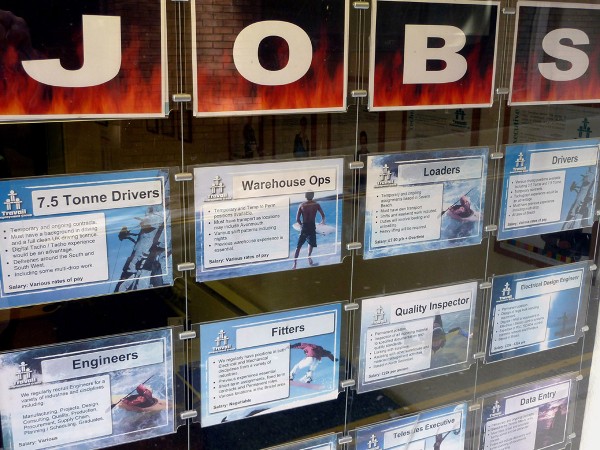 Many employers use such contracts, including many voluntary-sector and public-sector organisations, including the NHS, local councils and Buckingham Palace. They are also used by many small and medium-sized enterprises and many well-known large companies, such as Sports Direct, Amazon, JD Wetherspoon and Cineworld. It gives them the flexibility to adjust the hours they employ people. It allows them to keep people in employment when demand is low. It also makes them more willing to take on staff when demand rises, as it removes the fear of being over-staffed if demand then falls back.
Many employers use such contracts, including many voluntary-sector and public-sector organisations, including the NHS, local councils and Buckingham Palace. They are also used by many small and medium-sized enterprises and many well-known large companies, such as Sports Direct, Amazon, JD Wetherspoon and Cineworld. It gives them the flexibility to adjust the hours they employ people. It allows them to keep people in employment when demand is low. It also makes them more willing to take on staff when demand rises, as it removes the fear of being over-staffed if demand then falls back.
But many workers dislike such contracts, which give them fewer employment rights and fewer hours than they would like to work. It also makes it difficult to budget when future income is uncertain. It also make credit and mortgages harder to obtain, as people have no guaranteed income. Another complaint is that companies may use the threat of lower hours as a tool to bully staff and get away with poorer working conditions.
In May of this year, the Business Secretary, Vince Cable, announced that he was setting up a review of zero hours contracts.
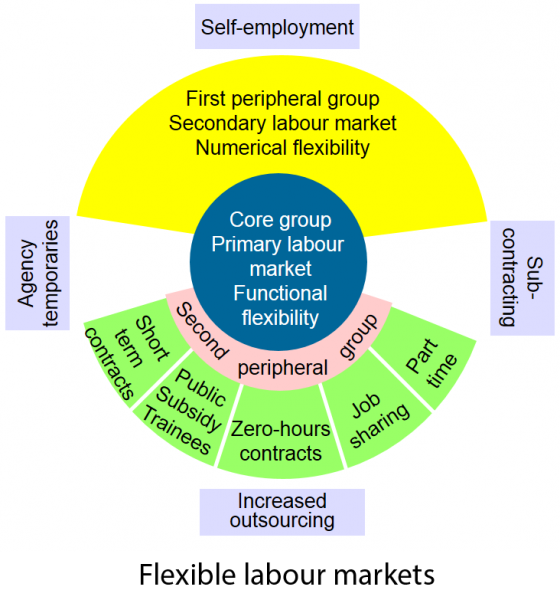 Note that zero hours are not the only form of flexible working. Other examples include: ‘self-employed’ workers, contracted separately for each job they do for a company; people paid largely or wholly on commission; on-call working; part-time working, where the hours are specified in advance, but where these are periodically re-negotiated; overtime; people producing a product or service for a company (perhaps at home), where the company varies the amount paid per unit according to market conditions.
Note that zero hours are not the only form of flexible working. Other examples include: ‘self-employed’ workers, contracted separately for each job they do for a company; people paid largely or wholly on commission; on-call working; part-time working, where the hours are specified in advance, but where these are periodically re-negotiated; overtime; people producing a product or service for a company (perhaps at home), where the company varies the amount paid per unit according to market conditions.
The following videos and articles look at the issue in some detail: at the extent of the practice and at its benefits to employers and its costs (and some benefits) to workers. Both The Guardian and the BBC have an extensive range of articles on the topic.
Webcasts
 Do zero hours contracts create real jobs? BBC Newsnight, Allegra Stratton (14/8/12)
Do zero hours contracts create real jobs? BBC Newsnight, Allegra Stratton (14/8/12)
 Record number of ‘Zero Hours Contracts’ ITV News on YouTube, Laura Kuenssberg (2/5/13)
Record number of ‘Zero Hours Contracts’ ITV News on YouTube, Laura Kuenssberg (2/5/13)
 Britons rally against ‘Zero Hour’ contracts Al Jazeera on YouTube (4/8/13)
Britons rally against ‘Zero Hour’ contracts Al Jazeera on YouTube (4/8/13)
 Anger at Amazon working conditions Channel 4 News (1/8/13)
Anger at Amazon working conditions Channel 4 News (1/8/13)
 Government to include Amazon in its zero hours probe Channel 4 News (2/8/13)
Government to include Amazon in its zero hours probe Channel 4 News (2/8/13)
 Councils using zero hours contracts BBC London, Warren Nettleford (31/7/13)
Councils using zero hours contracts BBC London, Warren Nettleford (31/7/13)
Podcasts
 The real economy: Labour market BBC Today Programme, Evan Davis (24/8/11)
The real economy: Labour market BBC Today Programme, Evan Davis (24/8/11)
 Zero hour contracts ‘just the norm’ BBC Today Programme, Rochelle Monte and Peter Cheese (5/8/13)
Zero hour contracts ‘just the norm’ BBC Today Programme, Rochelle Monte and Peter Cheese (5/8/13)
Articles
Zero-hours contracts: One million British workers could be affected Independent, Nigel Morris (5/8/13)
Zero hours contracts “spreading like wildfire”, official stats show Union News, Pete Murray (1/8/13)
Zero-hours contracts: what are they? The Guardian, Phillip Inman (30/7/13)
Buckingham Palace uses zero-hours contracts for summer staff The Guardian, Simon Neville, Matthew Taylor and Phillip Inman (30/7/13)
Nick Clegg: business department will investigate zero-hours contracts The Guardian,
Patrick Wintour, Simon Neville, Matthew Taylor and Phillip Inman (31/7/13)
Zero-hours contracts are not unavoidable The Guardian, Phillip Inman (1/8/13)
ONS admits it underestimated number of zero-hours contracts The Guardian, Simon Neville (1/8/13)
Zero-hours contract workers – the new reserve army of labour? The Guardian, Philip Inman (4/8/13)
Zero-hours contracts cover more than 1m UK workers The Guardian, Simon Goodley and Phillip Inman (5/8/13)
Zero-hours contracts use by councils needs to be moderated The Guardian, Vidhya Alakeson (5/8/13)
If zero-hours contracts are driving this ‘recovery’, it’s a lousy kind of recover The Guardian, Deborah Orr (9/8/13)
ONS increases its estimate of workers on zero hours contracts Financial Times, John Aglionby (1/8/13)
Zero Hours Herald Scotland, Ian Bell and Scott Dickson (4/8/13)
Sports Direct protests planned over zero hours contracts Channel 4 News (3/8/13)
Cable warns of exploitation of zero-hours contracts BBC News (5/8/13)
Q&A: What are zero-hours contracts? BBC News (5/8/13)
Record number of 16-24s on zero hours contracts at work BBC Newsbeat, Jim Reed (15/5/13)
Figures show 18-24s most likely on zero-hours contract BBC Newsbeat, Jim Reed and Amelia Butterly (5/8/13)
Andy Burnham calls for ban on zero hours contracts BBC News (28/4/13)
Zero-hours contracts: What is it like living on one? BBC News, Sean Clare (5/8/13)
Small Talk: Zero-hours contracts? Key for growth Independent, David Prosser (5/8/13)
Zero Hour Contracts Manchester based law firm, Emma Cross (30/7/13)
Data
People and proportion in employment on a zero-hour contract ONS (31/7/13)
Estimating Zero-Hour Contracts from the Labour Force Survey ONS (26/7/13)
One million workers on zero hours contracts, finds CIPD study CIPD, Michelle Stevens (5/8/13)
Labour Market Outlook CIPD
Questions
- Distinguish between open unemployment, disguised unemployment and underemployment?
- Distinguish between functional, numerical and financial flexibility? Which type or types of flexibility do zero-hours contracts give the firm?
- Identify the various benefits to employers of zero-hours contracts?
- What are the costs and benefits to workers of such contracts?
- Identify what forms of flexible contracts are used for staff in your university or educational establishment. Do they benefit (a) staff; (b) students?
- Are zero-hours contracts fair?
- In what ways do zero-hours contracts transfer risks from employers to employees?
- If a company introduces a system of zero-hours contracts, is this in accordance with the marginal productivity theory of profit maximisation from employment?
- From the perspective of the employer, how do the benefits of zero-hours contracts compare with other forms of flexible working?
- Consider the arguments for and against (a) banning and (b) regulating zero-hours contracts.
 Did the benefits of the London Olympics outweigh the costs? The government’s UK Trade and Industry (part of the Department of Business, Innovation & Skills) has just published a report, London 2012, Delivering the economic legacy, which itemises the economic benefits of the games one year on. It claims that benefits to date are some £9.9 billion.
Did the benefits of the London Olympics outweigh the costs? The government’s UK Trade and Industry (part of the Department of Business, Innovation & Skills) has just published a report, London 2012, Delivering the economic legacy, which itemises the economic benefits of the games one year on. It claims that benefits to date are some £9.9 billion.
This compares with costs, estimated to be somewhere between £8.9 billion and £9.3 billion, although this figure does not include certain other costs, such as maintenance of the stadium. Nevertheless, according to the figures, even after just a year, it would seem that the Games had ‘made a profit’ – just.
The £9.9 billion of benefits consist of £5.9 billion of additional sales, £2.5 billion of additional inward investment and £1.5 billion of Olympic-related high value opportunities won overseas.  Most of these can be seen as monetary external benefits: in other words, monetary benefits arising from spin-offs from the Games. The ‘internal’ monetary benefits would be largely the revenues from the ticket sales.
Most of these can be seen as monetary external benefits: in other words, monetary benefits arising from spin-offs from the Games. The ‘internal’ monetary benefits would be largely the revenues from the ticket sales.
In a separate report for the Department of Culture, Media & Sport, Report 5: Post-Games Evaluation, it has been estimated that the total net benefits (net gross value added (GVA)) from 2004 to 2020 will be between £28 billion and £41 billion.
But benefits are not confined just to internal and external monetary benefits: there are also other externalities that are non-monetary. The Culture, Media & Sport report identified a number of these non-monetary externalities. The Summary Report itemises them. They include:
• The health and social benefits of more people participating in sport
• Inspiring a generation of children and young people
• A catalyst for improved elite sporting performance in the UK
• Setting new standards for sustainability
• Improved attitudes to disability and new opportunities for disabled people to participate in society
• Greater social cohesion as communities across the UK engaged with the Games
• Increased enthusiasm for volunteering
• Accelerated physical transformation of East London
• Beneficial socio-economic change in East London
• Important lessons learned for the co-ordination and delivery of other large-scale public and public/private projects
But with any cost–benefit analysis there are important caveats in interpreting the figures. First there may be monetary and non-monetary external costs. For example, will all the effects on social attitudes be positive? Might greater competitiveness in sport generate less tolerance towards non sporty people? Might people expect disabled people to do more than they are able (see)? Second, the costs generally precede the benefits. This then raises the question of what is the appropriate discount rate to reduce future benefits to a present value.
 Perhaps the most serious question is that of the quantification of benefits. It is important that only benefits that can be attributed to the Games are counted and not benefits that would have occurred anyway, even if connected to the Games. For example, it is claimed in the UK Trade & Industry report that much of the Olympic park and stadium for the Winter Olympics in Russia was “designed and built by British businesses”. But was this the direct result of the London Olympics, or would this have happened anyway?
Perhaps the most serious question is that of the quantification of benefits. It is important that only benefits that can be attributed to the Games are counted and not benefits that would have occurred anyway, even if connected to the Games. For example, it is claimed in the UK Trade & Industry report that much of the Olympic park and stadium for the Winter Olympics in Russia was “designed and built by British businesses”. But was this the direct result of the London Olympics, or would this have happened anyway?
Another example is that any inward investment by any company that attended the London Olympics is counted in the £2.5 billion of additional inward investment (part of the £9.9 billion). As the London Evening Standard article below states:
In London, it credited the Games with helping seal the deal for the £1.2 billion investment in the Royal Albert Docks by Chinese developer ABP, the £1 billion investment in Croydon by Australian shopping centre developer Westfield with UK firm Hammerson and the £700 million investment in Battersea Nine Elms by Dalian Wander Group.
It is highly likely that some or all of these would have gone ahead anyway.
Then there are the £5.9 billion of additional sales. These are by companies which engaged with the Olympics. But again, many of these sales could have taken place anyway, or may have displaced other sales.
Many cost–benefit analyses (or simply ‘benefit analyses’) concern projects where there are strong vested interests in demonstrating that a project should or should not go ahead or, in this case, have gone ahead. The more powerful the vested interests, the less likely it is that the analysis can be seen as objective.
Webcasts and Podcasts
 Have Olympics and Paralympics really boosted trade? Channel 4 News, Jackie Long (19/7/13)
Have Olympics and Paralympics really boosted trade? Channel 4 News, Jackie Long (19/7/13)
 Economy boosted by Olympics Sky Sports News, Amy Lewis (19/7/13)
Economy boosted by Olympics Sky Sports News, Amy Lewis (19/7/13)
 Olympic investment boost to last decade – Cable BBC News (19/7/13)
Olympic investment boost to last decade – Cable BBC News (19/7/13)
 Did the UK gain from the Olympics? BBC Today Programme (19/7/13)
Did the UK gain from the Olympics? BBC Today Programme (19/7/13)
Articles
Government announces almost £10bn economic boost from London 2012 Specification Online (19/7/13)
Olympic Legacy Boosted Economy By £10bn, Government Insists The Huffington Post (19/7/13)
Olympics are delivering economic gold but volunteering legacy is at risk The Telegraph, Tim Ross (19/7/13)
Vince Cable: Case for HS2 still being made The Telegraph, Christopher Hope and Tim Ross (19/7/13)
Olympic legacy ‘gave London a £4bn windfall’ London Evening Standard, Nicholas Cecil and Matthew Beard (19/7/13)
London 2012 Olympics ‘have boosted UK economy by £9.9bn’ BBC News (19/7/13)
The great Olympic stimulus BBC News, Stephanie Flanders (19/7/13)
London Olympics still costing the taxpayer one year on Sky Sports (19/7/13)
Mayor missed long-term London Olympic jobs targets, says report BBC News, Tim Donovan (19/7/13)
Olympics legacy: Have the London 2012 Games helped Team GB develop a winning habit? Independent, Robin Scott-Elliot (19/7/13)
London 2012 added up to more than pounds and pence The Guardian, Zoe Williams (19/7/13)
Government Reports
London 2012 – Delivering the economic legacy UK Trade & Investment (19/7/13)
London 2012: Delivering the economic legacy UK Trade & Investment (19/7/13)
Report 5: Post-Games Evaluation: Summary Report Department for Culture, Media & Sport (July 2013)
Report 5: Post-Games Evaluation: Economy Evidence Base Department for Culture, Media & Sport (July 2013)
Questions
- Distinguish between gross and net benefits; monetary and non-monetary externalities; direct costs (or benefits) and external costs (or benefits).
- How should the discount rate be chosen for a cost–benefit analysis?
- Give some examples of monetary and non-monetary external costs of the Games.
- What are the arguments for and against including non-monetary externalities in a cost–benefit analysis?
- Why might the £9.9 billion figure for the monetary benefits of the Games up to the present time be questioned?
 The Prudential Regulation Authority is the new UK authority in charge of banking regulation and is part of the Bank of England. In a report published on 20/6/13, the PRA found that UK banks had a capital shortfall of £27.1 billion (see Chart 1 below for details) if they were to meet the 7% common equity tier 1 (CET1) ratio: one of the capital adequacy ratios (CARs) specified under the Basel III rules (see Rebuilding UK banks: not easy to do and Chart 2 below).
The Prudential Regulation Authority is the new UK authority in charge of banking regulation and is part of the Bank of England. In a report published on 20/6/13, the PRA found that UK banks had a capital shortfall of £27.1 billion (see Chart 1 below for details) if they were to meet the 7% common equity tier 1 (CET1) ratio: one of the capital adequacy ratios (CARs) specified under the Basel III rules (see Rebuilding UK banks: not easy to do and Chart 2 below).
CET1 includes bank reserves and ordinary share capital (‘equities’). To derive the CET1 ratio, CET1 is expressed as a percentage of risk-weighted assets. As Economics for Business (6th ed) page 467 states:
Risk-weighted assets are the total value of assets, where each type of asset is multiplied by a risk factor. …Cash and government bonds have a risk factor of zero and are thus not included. Inter-bank lending between the major banks has a risk factor of 0.2 and is thus included at only 20 per cent of its value; residential mortgages have a risk factor of 0.35; personal loans, credit-card debt and overdrafts have a risk factor of 1; loans to companies carry a risk factor of 0.2, 0.5, 1 or 1.5, depending on the credit rating of the company. Thus the greater the average risk factor of a bank’s assets, the greater will be the value of its risk weighted assets, and the lower will be its CAR.
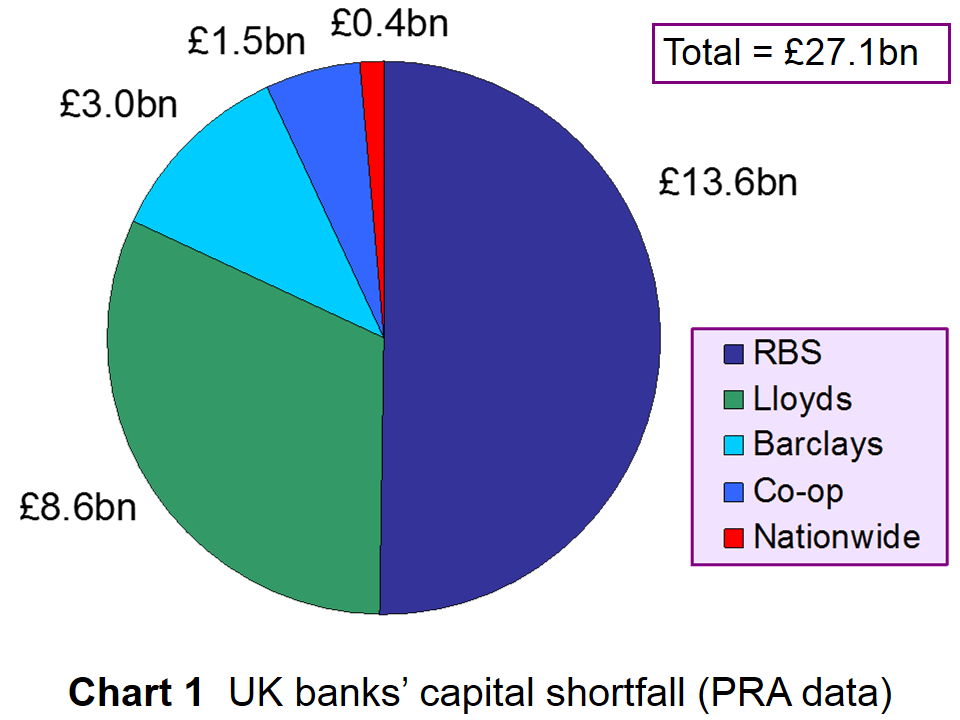 The data published by the PRA, based on end-2012 figures, show that the RBS group is responsible for around 50% of the capital shortfall, the Lloyds Banking Group around 32%, Barclays around 11%, the Co-operative around 5.5% and Nationwide the remaining 1.5%. HSBC, Santander and Standard Chartered met the 7% requirement. The PRA found that banks already were taking measures to raise £13.7bn, but this still leaves them requiring an additional £13.4 for current levels of lending.
The data published by the PRA, based on end-2012 figures, show that the RBS group is responsible for around 50% of the capital shortfall, the Lloyds Banking Group around 32%, Barclays around 11%, the Co-operative around 5.5% and Nationwide the remaining 1.5%. HSBC, Santander and Standard Chartered met the 7% requirement. The PRA found that banks already were taking measures to raise £13.7bn, but this still leaves them requiring an additional £13.4 for current levels of lending.
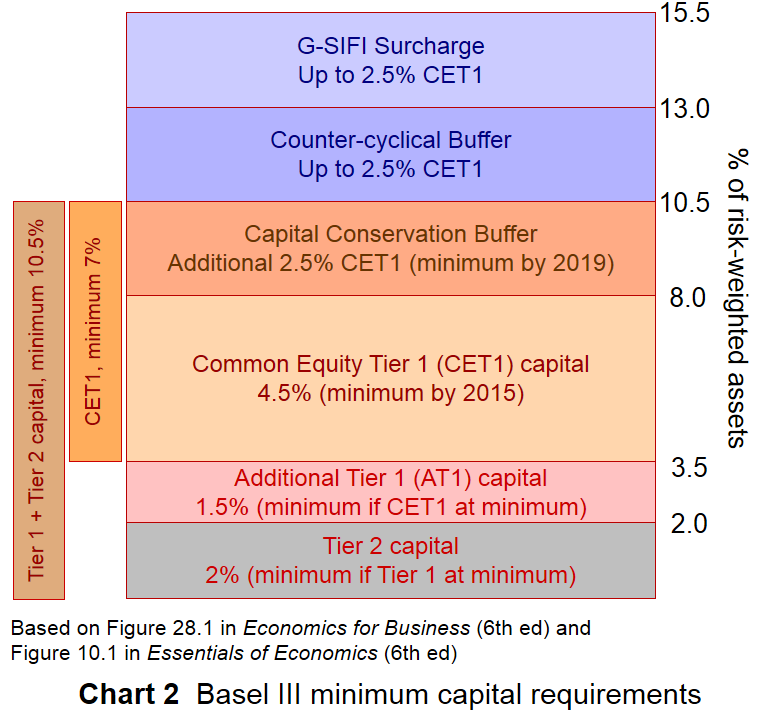 So what can the banks do? They must either raise additional capital (the numerator in the CAR) or reduce their risk-weighted assets (the denominator). Banks hope to be able to raise additional capital. For example, Lloyds is planning to sell government securities and US mortgage-backed securities and hopes to have a CET1 ratio of around 10% by the end of 2013. Generally, the banks aim to raise the required level of capital through income generation, the sale of assets and restructuring, rather than from issuing new shares.
So what can the banks do? They must either raise additional capital (the numerator in the CAR) or reduce their risk-weighted assets (the denominator). Banks hope to be able to raise additional capital. For example, Lloyds is planning to sell government securities and US mortgage-backed securities and hopes to have a CET1 ratio of around 10% by the end of 2013. Generally, the banks aim to raise the required level of capital through income generation, the sale of assets and restructuring, rather than from issuing new shares.
What both the Bank of England and the government hope is that banks do not respond by reducing lending. While that might enable them to meet the 7% ratio, it would have an undesirable dampening effect on the economy – just at a time when it is hoped that the economy is starting to recover. As Robert Peston states:
I understand that both Barclays and Nationwide feel a bit miffed about being forced to hit this tough so-called leverage ratio at this juncture, because they are rare in that they have been supporting economic recovery by increasing their net lending.
They now feel they are being penalised for doing what the government wants. So I would expect there to be something of a spat between government and regulators about all this.
Articles
Factbox – Capital shortfalls for five UK banks, mutuals Standard Chartered News (20/6/13)
UK banks ordered to plug £27.1bn capital shortfall The Guardian, Jill Treanor (20/6/13)
Barclays, Co-op, Nationwide, RBS and Lloyds responsible for higher-than-expected capital shortfall of £27.1bn The Telegraph, Harry Wilson (20/6/13)
UK banks need to plug £27bn capital hole, says PRA BBC News (20/6/13)
Barclays and Nationwide forced to strengthen BBC News, Robert Peston (20/6/13)
Five Banks Must Raise $21 Billion in Fresh Capital: BOE Bloomberg, Ben Moshinsky (20/6/13)
Will Nationwide be forced to become a bank? BBC News, Robert Peston (4/7/13)
PRA news release and data
Prudential Regulation Authority (PRA) completes capital shortfall exercise with major UK banks and building societies Bank of England: Prudential Regulation Authority (20/6/13)
Questions
- Explain what are meant by the various Basel III capital adequacy requirements
- What are the banks which were identified as having a capital shortfall doing about it?
- Would it be desirable for banks to issue additional shares? Would this make the banks more secure?
- Would the raising of additional capital allow additional credit creation to take place? Explain.
- What other constraints are there on bank lending?
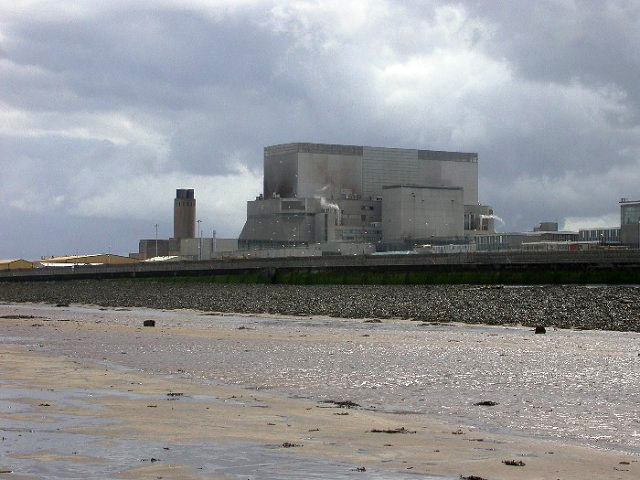 The UK government has just given the go-ahead for the building of two new nuclear reactors at Hinkley Point in Somerset. The contract to build and run the power station will go to EDF, the French energy company.
The UK government has just given the go-ahead for the building of two new nuclear reactors at Hinkley Point in Somerset. The contract to build and run the power station will go to EDF, the French energy company.
The power station is estimated to cost some £14 billion to build. It would produce around 7% of the UK’s electricity. Currently the 16 nuclear reactors in the UK produce around 19%. But all except for Sizewell B in Suffolk are due to close by 2023, although the lives of some could be extended. There is thus a considerable energy gap to fill in the coming years.
Several new nuclear power stations were being considered to help fill this gap, but with rising capital costs, especially following the Fukushima disaster in Japan, potential investors pulled out of other negotiations. Hinkley Point is the only proposal left. It’s not surprising that the government wants it to go ahead.
All that remains to agree is the price that EDF can charge for the electricity generated from the power station. This price, known as the ‘strike price’, is a government-guaranteed price over the long term. EDF is seeking a 40-year deal. Some low carbon power stations, such as nuclear and offshore wind and wave power stations, have high capital costs. The idea of the strike price is to reduce the risks of the investment and make it easier for energy companies to estimate the likely return on capital.
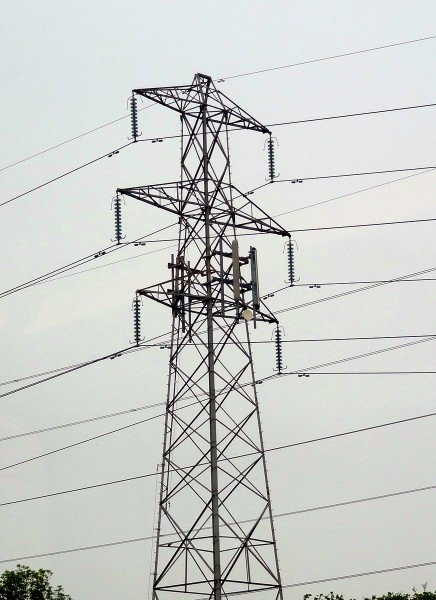 But the strike price, which will probably be agreed at around £95 per megawatt hour (MWh), is roughly double the current wholesale price of electricity. EDF want a price of around £100 per MWh, which is estimated to give a return on capital of around 10%. The government was hoping to agree on a price nearer to £80 per MWh. Either way, this will require a huge future subsidy on the electricity generated from the plant.
But the strike price, which will probably be agreed at around £95 per megawatt hour (MWh), is roughly double the current wholesale price of electricity. EDF want a price of around £100 per MWh, which is estimated to give a return on capital of around 10%. The government was hoping to agree on a price nearer to £80 per MWh. Either way, this will require a huge future subsidy on the electricity generated from the plant.
There are several questions being asked about the deal. Is the strike price worth paying? Are all the costs and benefits properly accounted for, including environmental costs and benefits and safety issues? Being an extremely long-term project, are uncertainties over costs, performance of the plant, future market prices for electricity and the costs of alternative forms of power generation sufficiently accounted for? Will the strike price contravene EU competition law? Is the timescale for construction realistic and what would be the consequences of delays? The articles consider these questions and raise a number of issues in planning very long-term capital projects.
Articles
Hinkley Point: Britain’s second nuclear age given green light as planning permission is approved for first of new generation atomic power stations Independent, Michael McCarthy (19/3/13)
Will they or won’t they? New nuclear hangs in the balance ITV News, Laura Kuenssberg (19/3/13)
Hinkley Point C: deal or no deal for UK nuclear? The Telegraph, Alistair Osborne (19/3/13)
New nuclear power plant at Hinkley Point C is approved BBC News (20/3/13)
Britain’s Plans for New Nuclear Plant Approach a Decisive Point, 4 Years Late New York Times, Stanley Reed and Stephen Castle (15/3/13)
Nuclear power plans threatened by European commission investigation The Guardian (14/3/13)
New Hinkley Point nuclear power plant approved by UK government Wired, Ian Steadman (19/3/13)
Renewable energy providers to help bear cost of new UK nuclear reactors The Guardian, Damian Carrington (27/3/13)
Europe backs Hinkley nuclear plant BBC News (8/10/14)
Information/Reports/Journal Articles
Environmental permitting of Hinkley Point C Environment Agency
NNB Generation Company Limited, Radioactive Substances Regulations, Environmental Permit Application for Hinkley Point C: Chapter 7, Demonstration of Environmental Optimisation EDF
Greenhouse Gas Emission of European Pressurized Reactor (EPR) Nuclear Power Plant Technology: A Life Cycle Approach Journal of Sustainable Energy & Environment 2, J. Kunakemakorn, P. Wongsuchoto, P. Pavasant, N. Laosiripojana (2011)
Questions
- Compare the relative benefits of a construction subsidy and a subsidised high strike price from the perspectives of (a) the government (b) EDF.
- What positive and negative externalities are involved in nuclear power generation?
- What difficulties are there in valuing these externalities?
- What is meant by catastrophic risk? Why is this difficult to take account of in any cost–benefit analysis?
- What is meant by a project’s return on capital? Explain how discounted cash flow techniques are used to estimate this return.
- What should be taken into account in deciding the rate of discount to use?
- How should the extra jobs during construction of the plant and then in the running of the plant be valued when making the decisions about whether to go ahead?
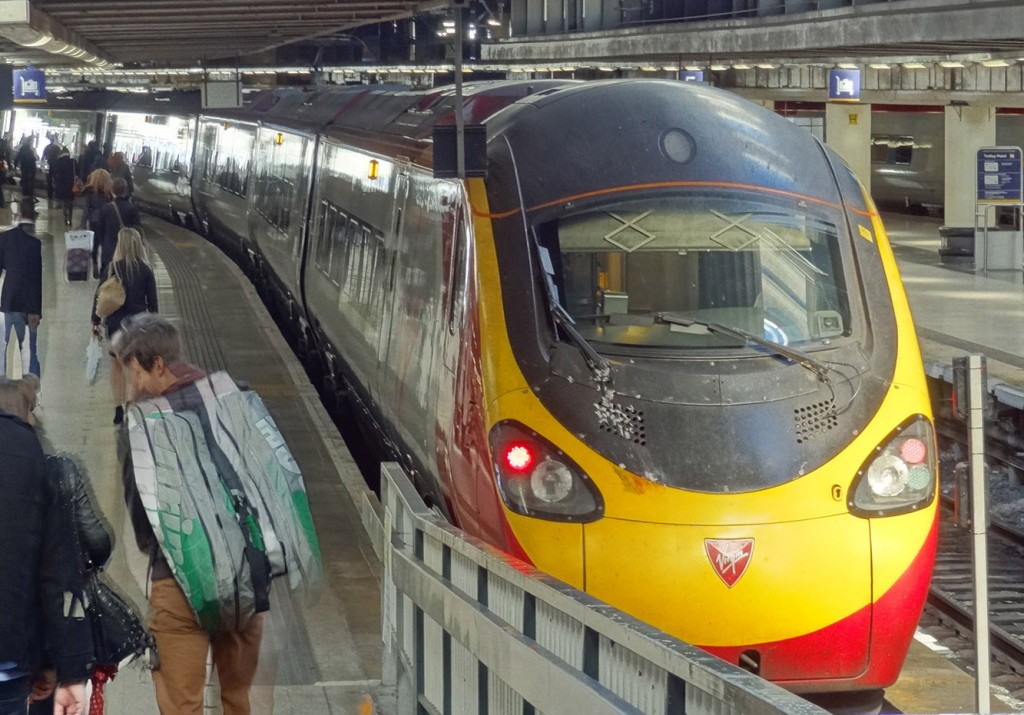 Virgin’s franchise to run the West Coast Main Line from London to Birmingham, Manchester, Liverpool, Glasgow and Edinburgh was due to expire in December. The Department of Transport thus invited tenders to run a new 13-year franchise, worth around £5 billion, and on 15 August announced that the franchise had been awarded to FirstGroup. It had bid substantially more than Virgin.
Virgin’s franchise to run the West Coast Main Line from London to Birmingham, Manchester, Liverpool, Glasgow and Edinburgh was due to expire in December. The Department of Transport thus invited tenders to run a new 13-year franchise, worth around £5 billion, and on 15 August announced that the franchise had been awarded to FirstGroup. It had bid substantially more than Virgin.
Virgin immediately challenged the decision, arguing that FirstGroup’s figures were flawed. According to the second BBC article below:
It argued that FirstGroup’s revenue projections were wildly optimistic – that passenger growth of 6% a year was unlikely given that Virgin had seen growth of 5% a year from a much lower base. This level of passenger growth would have seen FirstGroup’s revenue from the franchise grow by more than 10% a year, which was simply unrealistic, Virgin argued.
And it is not alone. “Everybody in the industry thought that this bid was not sustainable and that the risks had not been taken into account by the Department for Transport,” says rail industry expert Christian Wolmar.
If revenue targets are not met, the franchisee doesn’t have the money to pay the government the promised fee for the contract, which in FirstGroup’s case was back-loaded towards the end of the 13-year term.
After making its decision, the Transport Secretary at the time, Justine Greening, said that the process of assessing the bid was robust and fair and conducted with due diligence. Sir Richard Branson of Virgin strongly and publicly disagreed and Virgin decided to take the Department of Transport to court. The court case was scheduled to begin on 4 October.
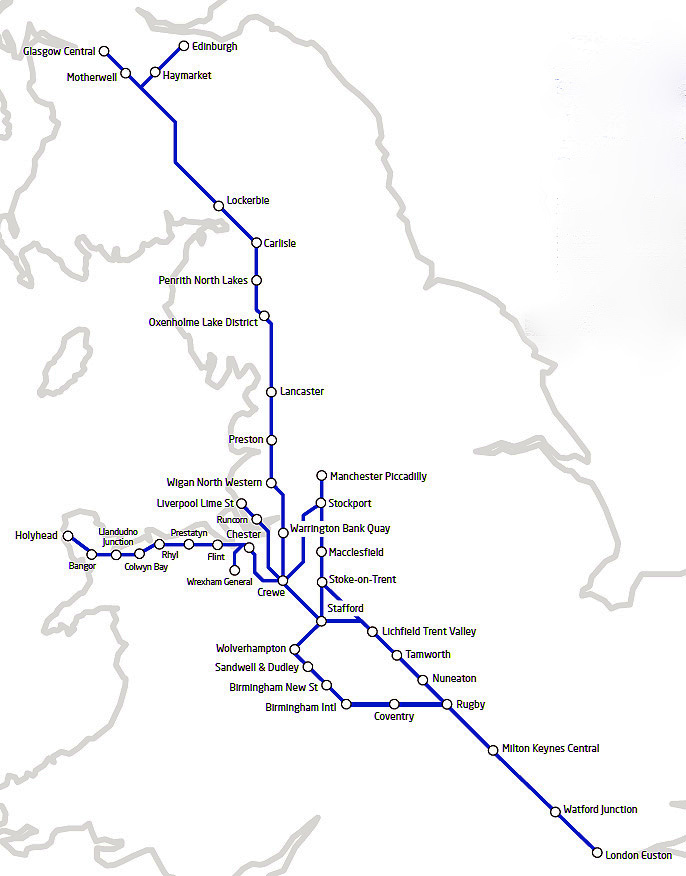 However, in preparing its case to put to the court, the Department of Transport uncovered significant errors in the evaluation of the bids. These errors involved the overestimation of passenger numbers, the undervaluation of risk and a failure to take inflation into account. The errors stemmed from inputting the data incorrectly.
However, in preparing its case to put to the court, the Department of Transport uncovered significant errors in the evaluation of the bids. These errors involved the overestimation of passenger numbers, the undervaluation of risk and a failure to take inflation into account. The errors stemmed from inputting the data incorrectly.
The errors were so serious that the new Transport Secretary, Patrick McLoughlin, on the day before the court case was due to begin, announced that he was scrapping the contract to FirstGroup and would invite new bids. All four of the original bidders would have their costs refunded, amounting to some £40 million.
 The minister also announced that he was setting up two reviews. One would seek to establish just what went wrong in the assessment of the West Coat Main Line bids and what lessons could be learned. This is due to report at the end of October. The other review would examine the wider rail franchise programme and how bids are appraised. In the meantime, three other franchise competitions had been ‘paused’ pending the results of this second review, due to report in December.
The minister also announced that he was setting up two reviews. One would seek to establish just what went wrong in the assessment of the West Coat Main Line bids and what lessons could be learned. This is due to report at the end of October. The other review would examine the wider rail franchise programme and how bids are appraised. In the meantime, three other franchise competitions had been ‘paused’ pending the results of this second review, due to report in December.
The articles look at the problems of assessing bids and properly taking into account risks associated with both revenue and cost projections. Not surprisingly, they also look at the politics of this amazing and unprecedented U-turn
Webcasts and podcasts
 West Coast Main Line rail franchise deal scrapped BBC News, Richard Westcott (3/10/12)
West Coast Main Line rail franchise deal scrapped BBC News, Richard Westcott (3/10/12)
 West coast rail franchise deal scrapped Channel 4 News, Krishnan Guru-Murthy (3/10/12)
West coast rail franchise deal scrapped Channel 4 News, Krishnan Guru-Murthy (3/10/12)
 ‘Major problem’ for West Coast Main Line BBC Today Programme, Louise Ellman (3/10/12)
‘Major problem’ for West Coast Main Line BBC Today Programme, Louise Ellman (3/10/12)
 Philip Hammond on West Coast Main Line contract BBC News, Andrew Neil (7/10/12)
Philip Hammond on West Coast Main Line contract BBC News, Andrew Neil (7/10/12)
 Virgin to run West Coast route ‘for at least nine months’ BBC News, Richard Westcott (15/10/12)
Virgin to run West Coast route ‘for at least nine months’ BBC News, Richard Westcott (15/10/12)
Articles
British transport secretary cancels West Coast franchise International Railway Journal, David Briginshaw (3/10/12)
Wrong track: Another humiliation for the government The Economist (5/10/12)
West Coast Main Line: total chaos as government scraps franchise deal The Telegraph, Alistair Osborne (3/10/12)
West Coast Main Line deal scrapped after contract flaws discovered BBC News (3/10/12)
Q&A: West Coast Main Line franchise BBC News (4/10/12)
What derailed the Transport Department BBC News, Robert Peston (3/10/12)
Transport official suspended over rail fiasco is ex-Goldman banker Independent, Oliver Wright and Cahal Milmo (5/10/12)
West Coast Main Line: Civil servant Kate Mingay speaks out BBC News (6/10/12)
Civil servant: I wasn’t to blame over West Coast bid The Telegraph, Louise Armitstead (5/10/12)
West coast rail fiasco: three government officials suspended Guardian, Gwyn Topham (3/10/12)
What does west coast shambles mean for big rail franchises? Guardian, Dan Milmo (3/10/12)
West coast mainline fiasco may claim further victims Guardian, Gwyn Topham and Dan Milmo (4/10/12)
The West Coast mainline, wasted taxes, and a secretive shambles at the heart of the Civil Service Independent, Steve Richards (4/10/12)
Why all the West Coast bids were wrong BBC News, Robert Peston (9/10/12)
Questions
- What were reasons for awarding the contract to FirstGroup back in August?
- How is discounting used to assess the value of projected future revenue and costs? How does the choice of the rate of discount impact on these calculations?
- In what way should risk be taken into account?
- Why was the FirstGroup bid particularly sensitive to the calculation of risk?
- If both costs and revenues go up with inflation, how is inflation relevant to the calculation of the profitability of a bid?
- What are the arguments for and against making franchises longer?
- Is it only at the bidding stage that there is any competition for train operators? Explain.
- Should full social costs and benefits be taken into account when assessing bids for a rail franchise? Explain.
 Despite the prolonged stagnation in the UK, unemployment has not soared. In fact, over the past two years the ILO unemployment rate (see here for a definition) has fallen slightly – from 8.6% in October 2011 to around 8.0% today. What is more, the claimant count rate is considerably lower than the ILO rate – at around 4.4%.
Despite the prolonged stagnation in the UK, unemployment has not soared. In fact, over the past two years the ILO unemployment rate (see here for a definition) has fallen slightly – from 8.6% in October 2011 to around 8.0% today. What is more, the claimant count rate is considerably lower than the ILO rate – at around 4.4%. Many employers use such contracts, including many voluntary-sector and public-sector organisations, including the NHS, local councils and Buckingham Palace. They are also used by many small and medium-sized enterprises and many well-known large companies, such as Sports Direct, Amazon, JD Wetherspoon and Cineworld. It gives them the flexibility to adjust the hours they employ people. It allows them to keep people in employment when demand is low. It also makes them more willing to take on staff when demand rises, as it removes the fear of being over-staffed if demand then falls back.
Many employers use such contracts, including many voluntary-sector and public-sector organisations, including the NHS, local councils and Buckingham Palace. They are also used by many small and medium-sized enterprises and many well-known large companies, such as Sports Direct, Amazon, JD Wetherspoon and Cineworld. It gives them the flexibility to adjust the hours they employ people. It allows them to keep people in employment when demand is low. It also makes them more willing to take on staff when demand rises, as it removes the fear of being over-staffed if demand then falls back. Note that zero hours are not the only form of flexible working. Other examples include: ‘self-employed’ workers, contracted separately for each job they do for a company; people paid largely or wholly on commission; on-call working; part-time working, where the hours are specified in advance, but where these are periodically re-negotiated; overtime; people producing a product or service for a company (perhaps at home), where the company varies the amount paid per unit according to market conditions.
Note that zero hours are not the only form of flexible working. Other examples include: ‘self-employed’ workers, contracted separately for each job they do for a company; people paid largely or wholly on commission; on-call working; part-time working, where the hours are specified in advance, but where these are periodically re-negotiated; overtime; people producing a product or service for a company (perhaps at home), where the company varies the amount paid per unit according to market conditions. Do zero hours contracts create real jobs? BBC Newsnight, Allegra Stratton (14/8/12)
Do zero hours contracts create real jobs? BBC Newsnight, Allegra Stratton (14/8/12) Record number of ‘Zero Hours Contracts’ ITV News on YouTube, Laura Kuenssberg (2/5/13)
Record number of ‘Zero Hours Contracts’ ITV News on YouTube, Laura Kuenssberg (2/5/13) Britons rally against ‘Zero Hour’ contracts Al Jazeera on YouTube (4/8/13)
Britons rally against ‘Zero Hour’ contracts Al Jazeera on YouTube (4/8/13) Anger at Amazon working conditions Channel 4 News (1/8/13)
Anger at Amazon working conditions Channel 4 News (1/8/13) Government to include Amazon in its zero hours probe Channel 4 News (2/8/13)
Government to include Amazon in its zero hours probe Channel 4 News (2/8/13) Councils using zero hours contracts BBC London, Warren Nettleford (31/7/13)
Councils using zero hours contracts BBC London, Warren Nettleford (31/7/13) The real economy: Labour market BBC Today Programme, Evan Davis (24/8/11)
The real economy: Labour market BBC Today Programme, Evan Davis (24/8/11) Zero hour contracts ‘just the norm’ BBC Today Programme, Rochelle Monte and Peter Cheese (5/8/13)
Zero hour contracts ‘just the norm’ BBC Today Programme, Rochelle Monte and Peter Cheese (5/8/13)









